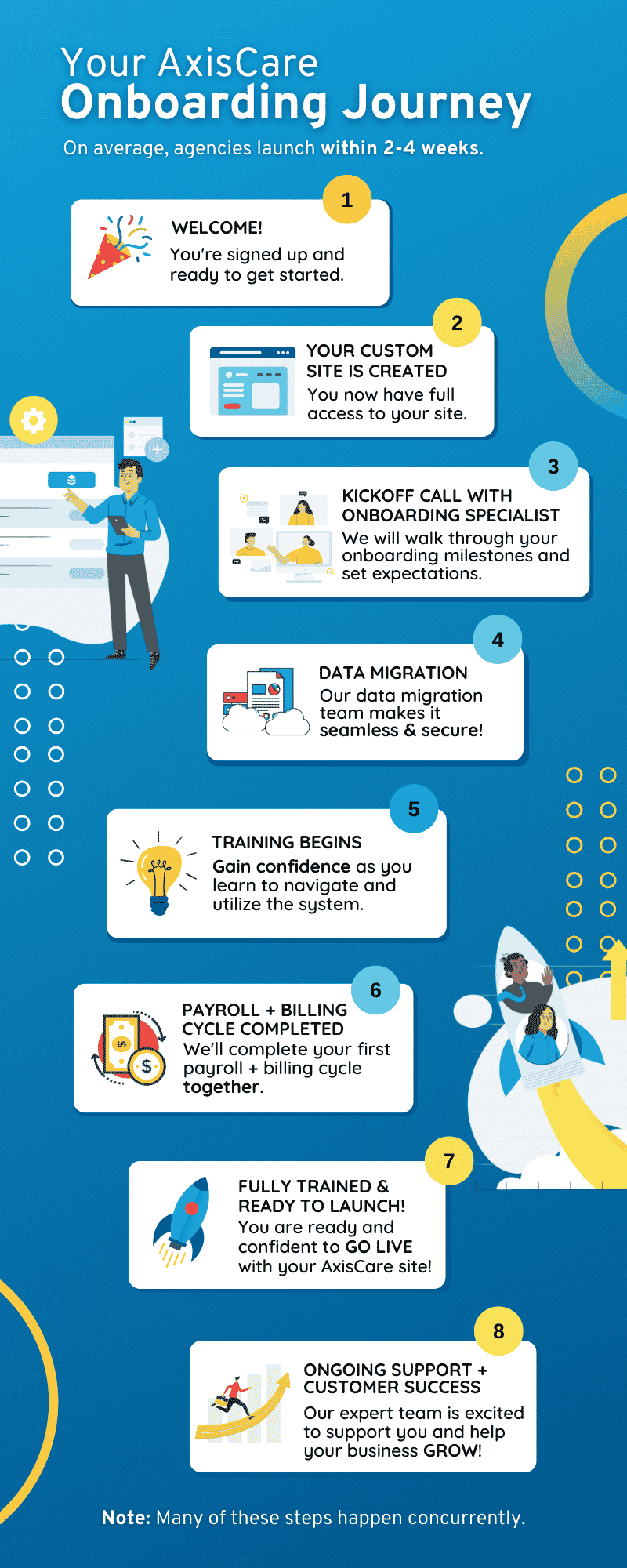Understanding Home-Based Healthcare
Demand for home healthcare is currently on the rise, with no signs of slowing down. According to the U.S. Bureau of Labor Statistics, the demand for at-home services and personal care aides is forecasted to increase by 34% between 2019 and 2029.
Patients are clearly prioritizing home-based care – and who could blame them? Aging peacefully in a familiar environment and receiving health services in the comfort of your own space is a great alternative to more traditional clinical approaches.
The Importance of Accurate Documentation
While remote health practitioners operate solo, they still belong to a larger care ecosystem. To enable continuous and streamlined care across healthcare touchpoints, every at-home interaction needs to be documented in detail and added to each patient’s file.
Any information that slips through the cracks – an adverse reaction, a medication adjustment, or even a routine check-in – can have significant ramifications down the road. On the other hand, proper documentation paves the way for a cohesive care experience, keeping all stakeholders on the same page and making the patient feel like they are in good hands.
When there’s so much at stake, relying on pen-and-paper documentation is a dice roll; many organizations are turning to software solutions to keep their home care documentation processes airtight.
Enhanced Patient-Centered Care
Patient-centered care (PCC) is an approach that looks beyond physical diagnosis. It takes many social and emotional factors into account during the care planning process, including their family circumstances, their mental health, and their financial situation, among other things.
By taking these variables into account, clinicians can better tailor their services to the individual. Encouraging patients to play an active role in their care planning creates a more “human” and connected experience, while building a trust- and support-based relationship with both patients and their families.
Improved Operational Efficiency
Proper documentation in a home care setting greatly enhances operational efficiency by simplifying administrative tasks. When caregivers meticulously record patient information, schedules, and treatment plans, it minimizes errors and reduces the time spent on manual data crunching. This translates to shorter wait times for patients, ultimately ensuring they receive timely care and support and improving their overall experience. A software that offers custom forms can allow your team to create specialized intake forms, assessments, and care plans, saving them hours of data-entry time.
Accurate Assessment & Care Planning
By recording details about a patient’s at-home environment, from accessibility features to safety concerns, caregivers can tailor treatment plans to meet their unique needs. This ensures that the care provided aligns with the patient’s unique environment, enhancing their comfort and enabling a better quality of life.
Improved Employee Satisfaction
Sifting through disorganized patient records can be stressful and time consuming. When caregivers have access to thorough, well-organized, and easily accessible information, they can provide more effective care and, therefore, reduce on-the-job frustration. This paves the way for greater job satisfaction and, in turn, decreased turnover.
Timely Medication Management
From dosages to scheduling, medication management leaves very little room for error. When patients’ prescription details are documented properly, they will receive their medications promptly and according to the correct schedule. Documentation also helps prevent medication errors, adverse drug interactions, and interruptions in treatment, leading to better patient outcomes.
Prevention of Hospital Readmissions
Thorough documentation paints a comprehensive picture of a patient’s health history. In competent hands, this information can help practitioners identify potential health issues early on, enable prompt intervention if necessary, and avoid unnecessary hospital admissions or readmissions.
Reduced Administrative Burden
Reducing administrative burden involves minimizing the paperwork, manual data entry, and administrative tasks that healthcare providers and staff must handle. Documentation systems like electronic health records (EHRs) and automated filing processes can reduce the time and effort spent on administrative duties.
Improved Communication & Coordination
Improved communication, like a HIPAA compliant chat features, and coordination refer to enhanced collaboration among healthcare team members, including physicians, nurses, therapists, and support staff. It reduces errors, improves patient safety, and enhances the overall patient experience.
Lowering Healthcare Costs
Proper documentation frees up time for caregivers to do what they do best, enabling home care agencies to maximize their resources and efficiently deliver health services to patients in need. What’s more, accurate documentation allows providers to bill more accurately for their services, which is crucial for fair reimbursement.
By reducing wasteful spending and improving the precision of reimbursement processes, proper documentation ultimately contributes to the broader goal of lowering healthcare costs, benefiting both healthcare providers and patients alike.
Challenges in Documenting Care
Proper home care documentation requires meticulous record-keeping on all fronts, and there is essentially no room for error. As you navigate these challenges, here are a few key risks to look out for.
Paperwork & Reimbursement Issues
Accurate documentation is essential for proper billing and reimbursement once healthcare services have been rendered. Inaccurate or incomplete documentation can lead to delayed payments or claim denials, which can cause significant financial and even emotional strain for patients.
Lack of Standardization
Documentation can only be effective and applicable if it follows a standard framework. Home healthcare agencies may not have set practices or templates, leading to variations in how care is documented.
Proper Training & Education
Standardizing your documentation practices is step one. Step two is training your team on how you’d like them to document their interactions. Providing home care onboarding and ongoing support for caregivers can be challenging when they work remotely and have varying levels of technological proficiency.
Use of Technology
Introducing new technologies requires time, patience, and a strategic rollout plan. As we mentioned above, some staff members may be less comfortable with technology than others – so using devices such as laptops, tablets, and smartphones can be challenging in a home environment, especially with no support nearby.
Enhance Your Home Care Documentation With AxisCare
The best way to keep your documentation in check, from patient records and insurance claims to caregiver timesheets, is by implementing software designed for remote healthcare. Getting everyone on the same page is as easy as standardizing your processes using a digital hub: book a demo with AxisCare today to learn more about how we can help.









